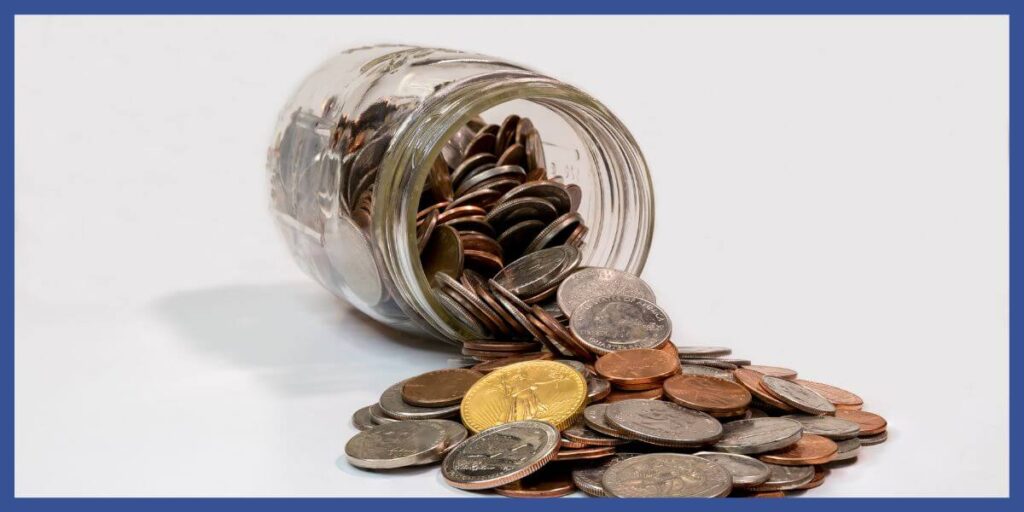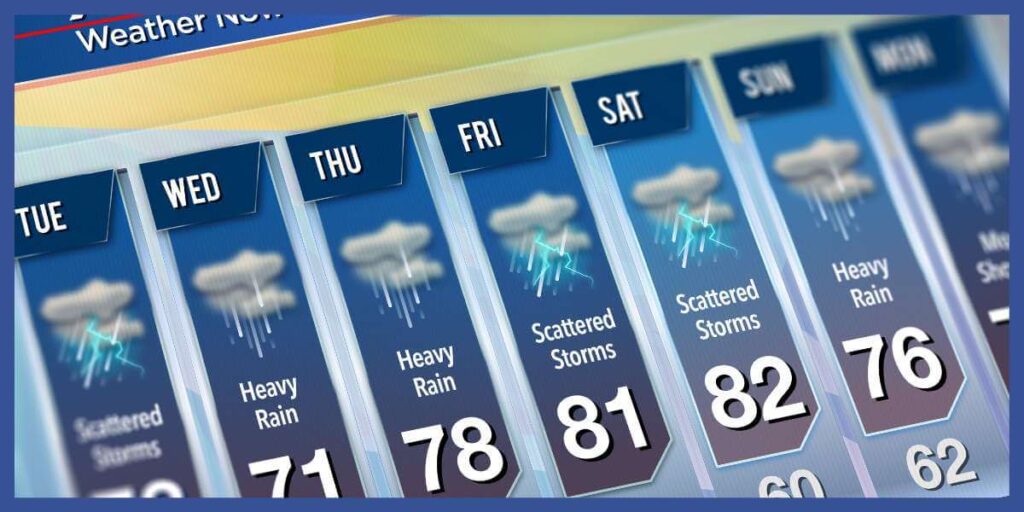Budgeting and fun don’t usually go hand-in-hand. When we think about cutting back on our spending, we often envision the sacrifices we have to make. But reaching our financial goals doesn’t have to mean giving up our social life or living off of canned beans. And budgeting doesn’t have to be boring.
The truth is budget challenges are a great way to save money while still enjoying life. These simple games can insert a little excitement into daily life and change the way we think about spending money.
If you’re ready to give budget challenges a try, this article covers 13 fun ways to supercharge your savings without feeling like you’re missing out. Let’s dive in!
Why Budgeting Challenges Work
Creating a financial plan can feel intimidating at first. You may find yourself asking:
- How much should I save?
- Do I need an emergency fund?
- Where should I keep the money?
- And what if I have credit card debt?
These highly personal questions can be paralyzing. And they prevent many people from planning for their financial future at all.
But you’re not like most people! Because you already realize that money-saving challenges are a step in the right direction.
These simple frameworks offer structure, goals, and a timeline for saving money. Gone is the guesswork, freeing you up to get creative and learn to love (or at least tolerate) budgeting.
Once you realize how transformative these budget challenges can be for your financial life, you may even find yourself looking forward to your next one!
13 Budget Challenges Worth Trying
Here are 13 popular budgeting challenges that can help you reduce spending, boost savings, and get on the path to financial success:
1) Zero-Spend Days

Zero-spend days are a more approachable version of the No Spend Challenge. Instead of trying not to spend money for an extended period of time, dedicate one day each week to be your “zero-spend” day.
The goal is not to incur any discretionary expenses this day. This may require planning ahead and/or saying no to certain things on that day. However, after some practice, you might find a zero-spend day to be a pretty painless way to avoid unnecessary costs.
One of the keys to mastering zero-spend days is finding free creative activities to fill your spare time. Consider trying the following:
- Visit your local library or a Little Free Library instead of browsing the bookstore
- Look up hiking trails instead of going to a boutique fitness class
- “Shop” your closet for long-forgotten items or set up a clothing swap with friends instead of heading to the mall
- Host a “bar clean out” happy hour with friends where you create cocktails from the remnants of your liquor cabinet
- Host an “Iron Chef” night where you cook a meal solely with the contents of your kitchen instead of grocery shopping or dining out
- Join a “Buy Nothing” group in your area and pick up items for free instead of purchasing them
- Prep meals in advance for your next zero-spend day to avoid impulse buys
Finding creative ways to avoid spending on your zero-day might even influence your purchasing behavior throughout the rest of the week. If so, you will lock in even more savings in the long run!
2) 52-Week Challenge
This budget challenge calls for setting aside a fixed amount of cash once per week for the whole year. Start by saving $52 the first week, $51 the next, and work your way down to $1. Or, start in reverse, beginning with $1 and working your way up to $52.
Each week, move the assigned amount of money from your checking account to a savings account that you won’t touch. By the end of the year, you will have saved $1,378.
While the 52-week budget challenge is a relatively small lift each week, the results can really add up. Given the average American spends about $1,400 on the holiday season, this challenge alone could ease that pressure.
If you are able to, we recommend starting with $52 and working your way down. This puts the biggest lift upfront when you are most motivated — and you can always ratchet things up if they get too easy.
3) Pick A Bill
If you tend to pay for things with cash or use cash envelope budgeting, this money-saving challenge is the perfect fit.
To kick things off, pick a single denomination: $1, $5, $10, or $20. And the challenge is… whenever you get this bill back as change, you have to save it.
Most people pick the $1 or $5 bill for two reasons — they are used all the time and they aren’t too painful to put away. Unless you use large bills regularly, $10s and $20s are less likely to be given as change. But when they do, they certainly add up.
Any time you get change in the form of your chosen bill, save it in a jar, piggy bank, or savings envelope. And consider continuing the budget challenge until you reach a certain savings goal.
This can be a fun way to start an emergency fund, save up for a vacation, or work toward a down payment. Once you hit your goal, you can restart the challenge with a new domination or try the next challenge on this list!
4) Save Spare Change

The spare change challenge is a classic for a reason. It is one of the simplest budget challenges to implement and it is fun to keep an eye on over time.
Just set out a jar in your home and empty your pockets, wallet, or bag at the end of each day. Dump any and all loose change into the jar and watch your change slowly inch toward the top.
Once the jar is full, take it to the bank to cash out and add the total to your savings account. You might be surprised at how significant the savings can be in one year.
This budget challenge works best if you frequently use cash to transact. And it pairs nicely with the “Pick A Bill” challenge for those who are feeling extra ambitious!
5) A Nickle A Day
This money-saving challenge starts easy but grows in difficulty over the course of the year. On day one, you only have to save one nickel. But on every other day, you have to save one nickel more than the previous day.
So on day 3 of the challenge, you will set aside three nickels. And on day 200, you would set aside 200 nickels.
If you can keep this challenge up for a year, you will have $3,339.75 saved at the end of the 365th day. $24.80 will have come from the first month, and a whopping $542.50 will have come from the final month.
Although this challenge is typically done for a year, you can try it for as long as you like. You could even use different denominations of coins and bills to make it more or less difficult. The most important thing is to stick with it even after it gets tough!
6) No Eating Out
According to BLS data, the average American household eats out nearly 6 times per week and spends more than $3,000 per year at restaurants.
The no-eating-out challenge means avoiding:
- Restaurants
- Fast food joints
- Take-out and delivery
- Snacks at convenience stores
- Coffee shops
If it sounds intimidating, that means you stand to save big. Stock up on groceries and plan meals in advance for a week or two. Commit to the money-saving challenge for a fixed amount of time and then reflect on the results.
Review your spending compared to months past and get a sense of your savings. Then, ask yourself if there were any other benefits. Did you eat healthier? Pick up a new cooking skill?
If making meals is not your cup of tea, consider trading responsibilities with a family member, roommate, or friend. Take turns cooking for each other so you are only responsible for half of the nights!
Related reading: 100 Envelope Challenge: Save Over $5,000 In Just 3 Months
7) Round-Ups
Use technology to save spare change without even noticing it. Budgeting apps like Acorns, Chime, and Qapital can round up your transactions to the nearest dollar, and then invest the difference on your behalf.
Simply download your app of choice, connect it to your debit or credit card, and then use this card to pay for your living expenses.
The beauty of this challenge lies in its automation. While you may be saving only a few cents with every transaction, you could easily set aside $100 in just a month or two. This budget challenge takes the pressure off of making big, sweeping lifestyle changes while still improving your financial health.
8) Pantry Clean Out
A remarkable 31% of all food in the U.S. is wasted. And when it comes from your home, that food waste is also financial waste. So next time you throw spoiled produce in the trash, remember that you have also thrown away your hard-earned dollars.
One of the easiest ways to minimize your food waste and maximize your savings is with regular pantry clean-out budget challenges.
Start by setting a limited grocery budget and only buying from a pre-written shopping list. Next, avoid eating out until your pantry is truly empty (or nearly so).
Deliberately work your way through your fridge, freezer, and pantry. And when you start running low, use an app like SuperCook to find recipes that only make use of what you have on hand.
Not only will you clean out your kitchen, but you will also avoid waste and reduce your spending on food.
9) Weather Savings

Do you like to check the weather forecast each day? If so, this could be one of your favorite money-saving challenges!
To begin, pick a savings goal. Then, pick a day of the week to check the weather report. Perhaps Temperature Tuesday or Weather Wednesday?
Whichever day you choose, make note of the projected high temperature that day. Transfer this amount of money into your savings account. Follow this same process all year long — unless you commit for a different time period.
This weekly ritual gamifies savings and makes it fun by involving a degree of chance. And if you weren’t invested in the weather before, you might be now!
Looking for the best place to stash these savings? Check out 13 of the Best High-Yield Savings Accounts.
10) 1% Challenge
If you don’t have enough money invested for retirement, there’s also a budget challenge for that.
Kick off the year by contributing 1% of your pay to your 401(k) account. Then, every other month, increase your contribution ratio by another percentage point.
By November, you will be adding 6% of your paycheck to your retirement account! That’s a lot of progress — but it’s also bound to be challenging.
So as exciting as it is to push for your financial goals, don’t let budgeting for the future set you back today. The last thing we would want is for you to leverage your credit cards and end up in debt to meet your monthly bills.
However, if you can complete the challenge, it will make a huge difference in the long run. Not only will you save on taxes come April, but you will also have the financial security of knowing that your investments are compounding on your behalf.
11) Lean Living
A lean living savings challenge can help you get back to basics if you want to overhaul your spending. Think of it as a more moderate alternative to the No Spend Challenge.
To save money with this budget challenge, look at your bank account and your monthly credit card statements. Identify impulse purchases and anything else you can cut out to get back on track to your financial goals.
For one full month, the goal is to live on only the bare minimum. And that means cutting out every expense that isn’t a necessity.
Consider cutting (or pausing) the following:
- Gym memberships
- Subscription and streaming services
- Eating out
- Shopping
- Entertainment
And try to pare down your spending on:
- Groceries
- Utilities
- Gas
It may be one of the tougher challenges, but at the end of the month, you should be able to tell which expenses you genuinely missed. If you are not longing to sign back up for any of the items you cut out, don’t! And consider it a budgeting win.
12) Roll The Dice

Feeling lucky? This game of chance is another fun way to make savings feel more like an event than a chore. Every day, roll a six-sided die. Whatever number you roll, transfer that number of dollars into your savings account.
If you want to level up the stakes, simply add a multiplier to the dice game. For example, if your multiplier is 2, save double the number that you roll (or roll two dice). Even without a multiplier, you can expect to save around $1,200 to $1,300 per year with this budget challenge!
13) Dry Savings Challenge
While Dry January is a popular trend, it doesn’t have to be the beginning of the year to try a “dry” savings challenge. At any time, pledge to stop drinking for at least a month. Download an app like Quit Drinking to stay motivated and calculate potential savings.
And if you already don’t drink, consider replacing alcohol with another expense. Maybe skip lunches, appetizers, or coffee shop runs for a whole month.
The point of these budget challenges is to forfeit an expense for one month to save money. You can use these savings to pay down debt, start investing, or build up a sinking fund.
Looking for more ways to boost your savings? Consider a side hustle to generate more cash.
Budget Challenges Are Fun
Budget challenges are a fun alternative to permanently cutting back. Because they gamify the experience and add a deadline, it is much easier to stay motivated and on track.
So pick out your favorite budget challenge today, or work your way through the whole list! As you get into the spirit, you will improve your savings rate, balance your budget, and speed up your progress toward financial freedom.



